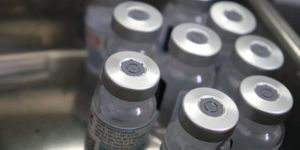Protecting the Mango Plant with Signal Interference
Researchers made huge steps in mitigating the virulence of a mango plant toxin by exploiting the bacteria’s signal pathways.
The bacteria Pseudomonas syringae is both a benign and pathogenic bacterium to plants. Some strains have formed symbiotic relationships with their hosts, and others like P. syringae are pathogenic. P. syringae is particularly harmful, infecting virtually all economically important crops. Finding a way to mitigate the harm of this pathogen is an urgent matter, both scientifically and for the world economy.
The mangotoxin, produced by the syringae pathovar (variant) of P. syringae (Pss), has been identified as the cause of bacterial apical necrosis in mango trees. Bacterial apical necrosis on mango trees appears in the form of dark, dead spots on the plant’s buds and leaves, which leads to a decrease in flowering on the mango trees. The mango fruit comes from these flowers, meaning that this apical necrosis causes a dramatic decrease in mango fruit yield.
Researchers knew that the toxins produced by Pss were regulated by a signaling pathway known as the mgo operon (the genetic component that controls the activation of the mangotoxin). They also discovered that the production of mangotoxin is controlled by a novel chemical called leudiazen, part of a known family of bacterial signaling molecules.
Identifying this chemical signaling agent was a game-changer because it has been shown that leudiazen can be deactivated by potassium permanganate (KMnO4). You may have used the purple compound before in a beginner chemistry lab. The best part about this system of inactivation is that it is also organic— the KMnO4 used in this experiment has been approved for use in organic farming in the European Union.
This is the first example of a chemical approach being used inactivate bacterial signaling in order to stop the spread of infection. This study’s approach was not to kill the bacteria, but instead to regulate its pathogenesis. The next step for this discovery is getting this treatment approved by a regulatory body, so that it may go on to save mango plants across the globe.
Source: Science Advances








